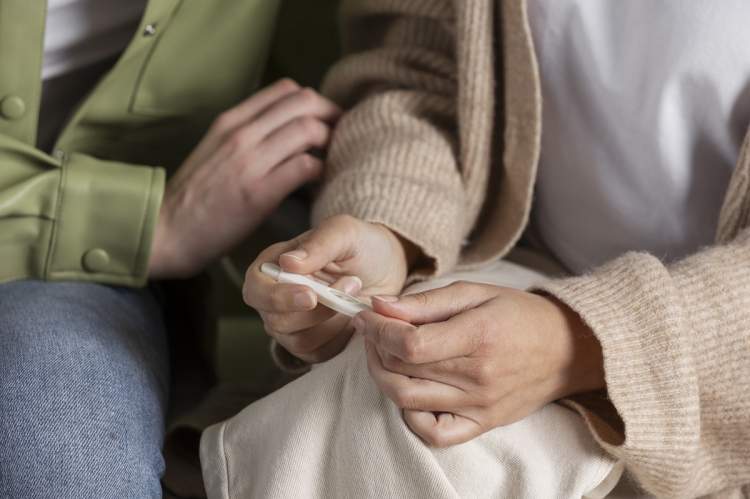Before, during and after funeral
Death is certainty. It is an inevitable reality and we need to know what to do then.
Many dies in hospital, away from relatives, but some pass away among their families and beloved ones. Taking care of the dead according to the Sunnah is easier in a family environment. The steps of which are as follows.
The moments before death are obvious. This state is called “muhtadar”. It is customary to turn the body to the direction of the Qibla (Mecca). Family members recite the Quran if they can, or offer supplications. The dying person, if he/she is conscious, tries to pass away with the words of the Shihada.
After death befalls, eyes should be closed with a gentle motion and the jaws should be tied up or supported to keep the mouth closed. The limbs should be arranged in an extended position, the head should be adjusted to the direction of the Qibla. Jewelry must be removed. The next is the preparation of the body.
It’s crucial that the body is completely clean. It must be cleansed at least three times, either by the spouse or a same sex family member. If it’s still not clean after three times, it is washed as many times as necessary. However, it must be an odd number of times.
Order of the ritual cleansing
It begins with the upper right side, then the upper left side, lower right side, and ending with the lower left side. A woman’s hair is cleansed and put into three braids.
Shrouding the body
Shrouding is completed using three white sheets in case of man and five white sheets in case of woman. They are first spread out and stacked one upon the other. Then the body is placed on top of them. The left hand of the deceased is placed on the chest. The right hand is then placed on top of the left. The sheets are brought over the body one at a time. First the right side, then the left, until they are all wrapped around the body. A rope is tied at the top of the head and another below the feet. One or two ropes are tied around the middle of the body.
It is the right of every Muslim to have as big number of people as possible at time of the funeral therefore to attend it is favored (mustahabb).

What is a Muslim funeral (Janazah) like?
Men and women typically sit separately. Traditionally the women sit at the back.
An Imam or the oldest male family member stands at the front facing Mecca, and the body is placed in front of him. With his back to the mourners, he presents the funeral prayer.
It is the right of a Muslim that when he passes away other Muslims should pray Janazah prayer for him. Janazah prayer is a supererogatory prayer. If no one from the whole of the Muslim Community offers the Janazah Prayers, then the whole community will be considered sinful in the sight of Allah.
After the Janazah prayer is performed the death should be buried as soon as possible. The body should be carried and placed at the Qiblah side of the grave.
When orienting the tomb, it must be taken into account that the dead if lying on their right side, have to face toward Mecca. For this, a recess (Lahd) must be made at the bottom of the grave, which is so narrow that the body can only fit lying on its side. If the strength of the soil allows, the Lahd can be formed in the Qibla side of the grave. The essence of Lahd is to place the corpse in an enclosed space where there is also oxygen. The goal is to ensure the decomposition of the body as soon as possible. If the soil conditions do not allow the recess to be dug on the side of the grave, it can also be formed in the middle. In case of sandy soil, the recess can be lined with planks. Bricks and baked material must not be used to seal the Lahd. Clay, planks, or other natural materials are required.
This is followed by the filling of the grave, for which no more soil can be used than has been excavated from it. After the tomb and its hump was formed, the mourners establish prayer and offer supplication. From this time, there are differing opinions according to schools, whether the grave can be visited or not, whether the Quran can be recited in the cemetery or not.
Muslims believe that at death, they are buried and remain in their grave until the Day of judgement therefore, to bother the place or disentombment is not allowed anymore.
In a Hadith it is reported that if a person recites Surah Yasin in the graveyard, the punishment of the dead will be eased and the reciter will be rewarded just as much as the dead. In this manner the Companions of the Prophet visited the graveyard. The words of another Hadith indicate only salutations and Du`a for the dead and remembering death. All other ways such as placing wreaths, flowers, paying homage etc. are incorrect according to the Shariah.
Period of Iddah (restraining period)
- The period of waiting after one's husband dies is called iddah. This period is of four months and ten days.
- During this period she should remain in the dwelling that they occupied at the time of the death of her husband. She is not allowed to leave this house if she has sufficient provision. If she is the sole bread winner with no other means of income, then only is she permitted to leave her house during the day. At night she should return to his house.
- The widow that is expecting a child at the time of the death of her husband, her Iddah will be until the birth of that child. The four month and ten days should not be reckoned in this instance.
- If a woman is not at home at the time of her husband's death, she should return as soon as possible and pass the period of Iddah at home. The days of Iddah will be calculated from the time of the demise. The above issues are not a form of suppressing the women, rather they are there to avoid long-term problems, e.g. if a woman got married immediately upon her husband’s death and unbeknown to her she was pregnant then there would be a problem with ascertaining the child’s parentage and the new husband may not be willing to father the child.
- A woman in Iddah should abstain from using fancy clothing, makeup or jewelry.
A few noteworthy issues
The trustee of the deceased should pay all debts as soon as possible. Isaluth-thawab (repentence) for the deceased should be made by feeding the poor, giving sadaqah, istighfar etc. No specific dates or days such as the third, seventh, eleventh or fortieth are mentioned in Shariah for such devotions.
Stillborn children
A stillborn child can be named, and should be given Ghusl and wrapped in a piece of cloth, (not Kafn) and then buried in a respectable manner.
Miscarriages
In the case of a miscarriage, if the limbs are formed, then it can be named, and should be given Ghusl, wrapped in a piece of cloth and buried just as a still born child. If the limbs are not formed, no name will be given and there will be no ghusl. A malformed child should just be wrapped in a piece of cloth and buried.
Special provisions.
He who is killed in battle, is the victim of a crime or a catastrophic accident, and there is no way to wash the dead, he must be buried in his blood, i.e. without washing.
In times of epidemics, when there is no way for family to perform tasks related to the deceased, it is the responsibility of the hospital or facility to prepare the body properly. If there is no way to use Kufn and the law requires a closed coffin or more severe burial due to the risk of infection, this should be followed, but cremation should still be rejected.





















